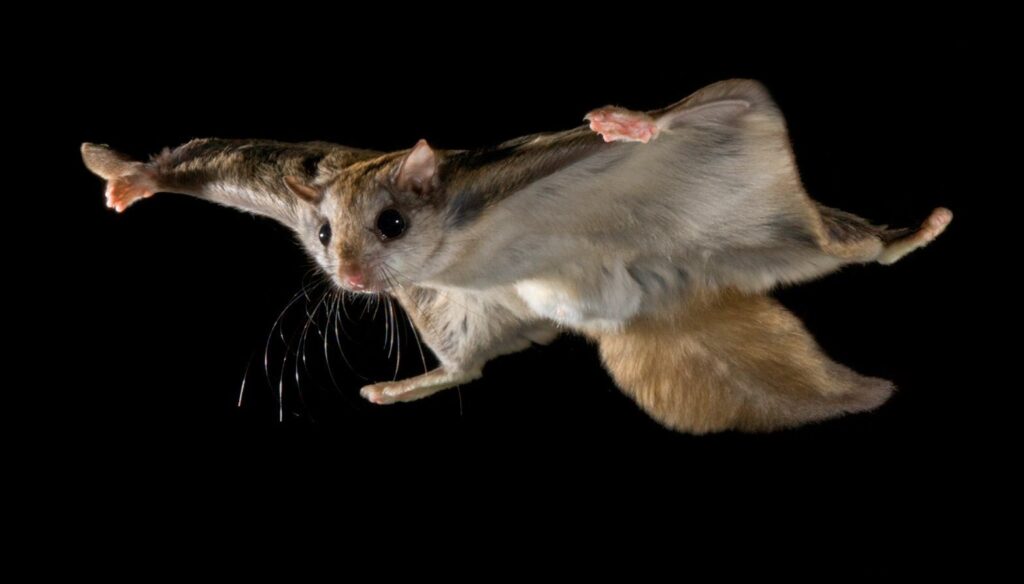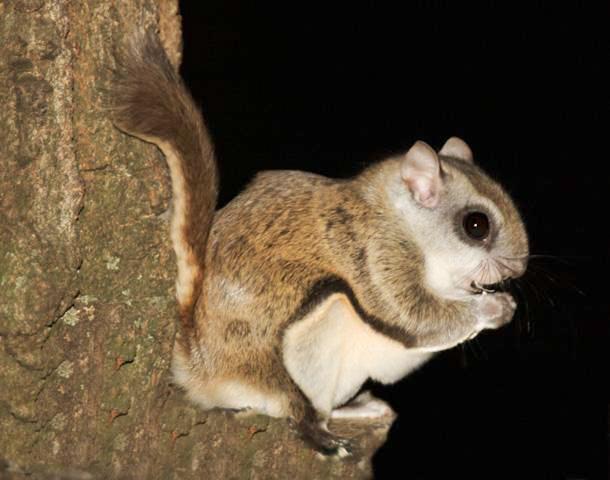Table of Contents
ToggleIntroduction

Welcome to the enchanting realm of the treetops in Georgia, where the wooded landscapes come a live with the graceful presence of flying squirrels. Flying Squirrels In Georgia? Nestled amid the diverse ecosystems of the state, flying squirrels add an extra layer of wonder to Georgia’s rich biodiversity. These remarkable rodents, known for their nocturnal flights and captivating glides through the canopy, bring a touch of magic to the Southern forests. Join us on a journey to explore the unique characteristics, ecological significance, and fascinating lives of flying squirrels. As they navigate the Georgian woodlands, contributing to the ecological tapestry of this charming region.
Physical Features And Adaptations Of Flying Squirrels
Description of the Physical Characteristics of Flying Squirrels
Flying squirrels, charming residents of the treetops, possess a set of distinct physical features that contribute to their unique lifestyle. Characterized by large, expressive eyes and a soft, dense fur coat, these rodents typically have a flattened. Broad tail that aids in balance during their acrobatic movements. Their fur varies in color, ranging from shades of brown and gray to reddish tones. Allowing for effective camouflage within the forest canopy. Compact yet agile, flying squirrels are relatively small in size. With most species measuring around 8 to 12 inches in length, excluding their tails.
Exploration of Their Adaptations for Gliding and Nocturnal Behavior
Flying squirrels have evolved remarkable adaptations that enable them to navigate the forest canopy with unparalleled agility. Foremost among these adaptations is their ability to glide through the air. Unlike true flight, where an animal actively propels itself, flying squirrels use a unique form of passive flight. Their patagia, specialized membranes of skin, stretch between their forelimbs and hindlimbs, creating a surface that. When extended, allows them to glide between trees. This adaptation facilitates their movement from branch to branch and tree to tree, making them highly efficient in navigating their arboreal environment.
In addition to their gliding prowess, flying squirrels are predominantly nocturnal creatures. Their large, round eyes are adapted for low-light conditions, aiding them in navigating the darkness of the night. This nocturnal behavior not only helps them avoid diurnal predators but also allows them to capitalize on the availability of resources, such as fruits, nuts, and insects, during the quieter hours.
Role of Their Distinctive Membranes (Patagia) in Gliding
The key to the flying squirrel’s aerial acrobatics lies in the patagia, the stretchy membranes that connect their limbs. These membranes transform their bodies into living wings during a glide. When a flying squirrel leaps from a high point, it extends its limbs, stretching the patagia to form a parachute-like structure. This ingenious adaptation allows them to cover distances of up to 150 feet in a single glide, effortlessly maneuvering through the forest canopy.
Habitat And Distribution Of Flying Squirrels In Georgia
Overview of the Types of Habitats Flying Squirrels Inhabit in Georgia
Georgia’s diverse landscapes provide a range of habitats for flying squirrels, allowing them to thrive in various ecosystems. These adaptable rodents are commonly found in deciduous and mixed hardwood forests, where the presence of tall trees with expansive canopies provides an ideal environment for their arboreal lifestyle. Flying squirrels are particularly fond of mature forests with plenty of vertical structures, such as tall trees and snags, which offer ample opportunities for gliding and nesting.
Beyond natural forests, flying squirrels may also inhabit urban and suburban areas with mature trees. In these environments, they may utilize parks, wooded neighborhoods, and green spaces, showcasing their ability to coexist with human settlements.
Range and Distribution of Flying Squirrel Species in the State
Georgia is home to several species of flying squirrels, with the Southern Flying Squirrel (Glaucomys volans) and the Northern Flying Squirrel (Glaucomys sabrinus) being the most prevalent. These species share a similar appearance and behavior but have subtle differences in their distribution.
The Southern Flying Squirrel is more widespread throughout Georgia and can be found across the entire state. Their range extends from the coastal plain to the mountainous regions, showcasing their adaptability to diverse habitats. On the other hand, the Northern Flying Squirrel is more restricted to the higher elevations of North Georgia, particularly in mountainous areas.
Ecological Significance Of Flying Squirrels In Georgia
Contribution of Flying Squirrels to Forest Dynamics
Flying squirrels play a vital role in the ecological dynamics of Georgia’s forests. Their presence influences forest health and regeneration through various mechanisms. As arboreal creatures, flying squirrels spend a significant portion of their lives in trees, creating a dynamic relationship with the forest canopy. Their activities, including gliding and foraging, contribute to the overall balance of the forest ecosystem.
One notable contribution is their role in promoting biodiversity within the canopy. Flying squirrels disperse seeds from the fruits they consume, aiding in the distribution of plant species. This dispersal not only influences the composition of vegetation but also facilitates the regeneration of the forest, promoting genetic diversity and resilience.
Impact on Seed Dispersal and Vegetation Growth
The primary ecological contribution of flying squirrels lies in their role as seed dispersers. After consuming fruits and nuts, they transport seeds to different locations as they move through the forest canopy. This process is crucial for the establishment of new plants and the maintenance of healthy ecosystems.
Flying squirrels contribute to seed dispersal across varying elevations and habitats, supporting the diversity of plant life in Georgia. The seeds they transport may germinate in new areas, enhancing vegetation growth and ensuring the continuity of plant species. By fostering this spread of seeds, flying squirrels contribute to the restoration of disturbed areas and play a part in shaping the composition of the state’s forests.
Function in the Food Chain and Relationships with Other Animals
As integral components of the food chain, flying squirrels interact with various species in Georgia’s ecosystems. They serve as prey for a range of predators, including owls, hawks, and certain snakes. At the same time, their herbivorous diet and seed-dispersal activities influence the abundance and distribution of plant species, indirectly impacting other herbivores and insects within the forest ecosystem.
Conclusion
The flying squirrels of Georgia paint a captivating portrait of adaptability and resilience within the state’s diverse ecosystems. As these nocturnal acrobats gracefully navigate the treetops, their presence adds a touch of enchantment to Georgia’s wooded landscapes. From their unique adaptations for gliding to their integral role in forest dynamics, flying squirrels exemplify the interconnected relationships within the delicate balance of nature.
As guardians of the Southern woodlands, it becomes imperative for us to appreciate and safeguard these charismatic creatures and the habitats they call home. The conservation of flying squirrels in Georgia is not just a commitment to preserving a species but also an investment in maintaining the health and biodiversity of the broader ecosystem. By understanding and protecting these remarkable rodents, we contribute to the intricate web of life that defines Georgia’s natural beauty.







